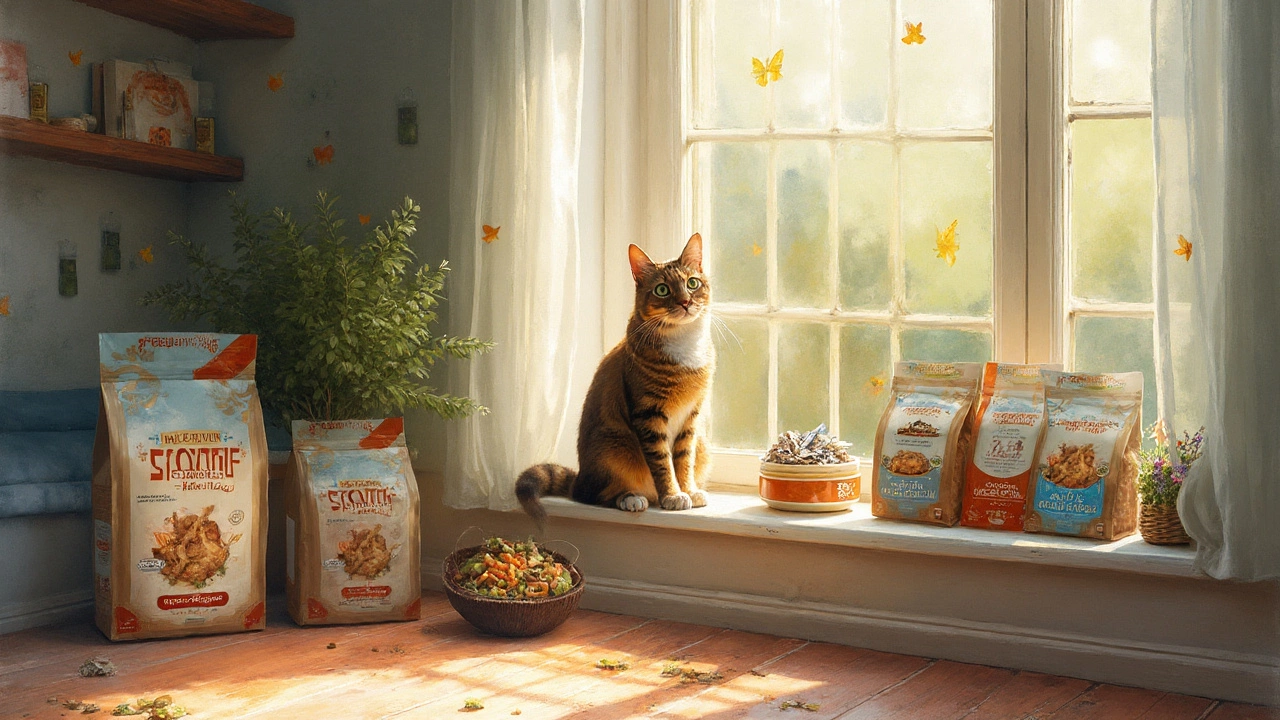Best Dry Cat Food – What to Look For and Why It Matters
If you’ve ever stared at a shelf of cat kibble and felt lost, you’re not alone. Dry cat food is the most common way to feed a cat, but not all kibble is created equal. The right choice can keep your feline fit, glossy‑coated, and full of energy. The wrong one can lead to bland fur, upset tummies, and costly vet trips.
Key Ingredients That Show Up in Quality Kibble
First thing to check is the protein source. Look for real meat listed as the first ingredient – chicken, turkey, salmon, or lamb. If you see “meat meal” or “by‑product” high up, be cautious. Cats are obligate carnivores, so they need animal protein to thrive.
Next, pay attention to the carbohydrate level. Cats don’t need a lot of carbs, so a formula with less than 30% grain or filler is a good sign. Too many corn, wheat, or rice can cause weight gain and digestive issues.
Finally, hunt for added nutrients like taurine, omega‑3 fatty acids, and antioxidants. Taurine is essential for heart and eye health, while omega‑3 helps the coat stay shiny. A quality kibble will list these nutrients on the label.
How to Choose Based on Your Cat’s Age and Health
Kittens, adults, and seniors have different nutritional needs. Kitten kibble packs extra calories and DHA for brain development. Adult formulas aim for balanced calories and joint support. Senior blends often include glucosamine for stiff joints and lower calorie counts to prevent obesity.
If your cat has a health issue – like urinary crystals or food allergies – pick a specialized formula. Look for grain‑free or limited‑ingredient options, and ones that promote urinary health with added moisture or magnesium control.
Portion size matters too. Follow the feeding guide on the bag, but adjust based on your cat’s activity level. Over‑feeding dry food can easily lead to weight gain because it’s calorie‑dense.
Another practical tip: store kibble in an airtight container. Exposure to air makes the fats go rancid, which not only reduces taste but can also cause stomach upset. Keep the bag sealed and use a dry box for longer freshness.
When you’re ready to buy, compare a few top brands side by side. Look at the ingredient list, protein percentage, and any added health boosters. Reading a few short reviews can also help – real owners often point out taste, texture, and any digestive changes they noticed.Bottom line: the best dry cat food is the one that lists real meat first, keeps carbs low, adds essential nutrients, and matches your cat’s life stage. Stick to these basics, and you’ll give your cat a solid foundation for health and happiness.
Ready to stock up? Head to Nelson's Equestrian and Pet Supplies and browse our curated selection of dry cat foods that meet these standards. Your cat will thank you with extra purrs and a glossy coat.
Healthiest Cat Food for Indoor Cats: Top Picks and Nutrition Tips
Wondering what the healthiest cat food for indoor cats is? This guide breaks down what makes the best diet, ingredients to look for, and expert tips for happy, healthy felines.
